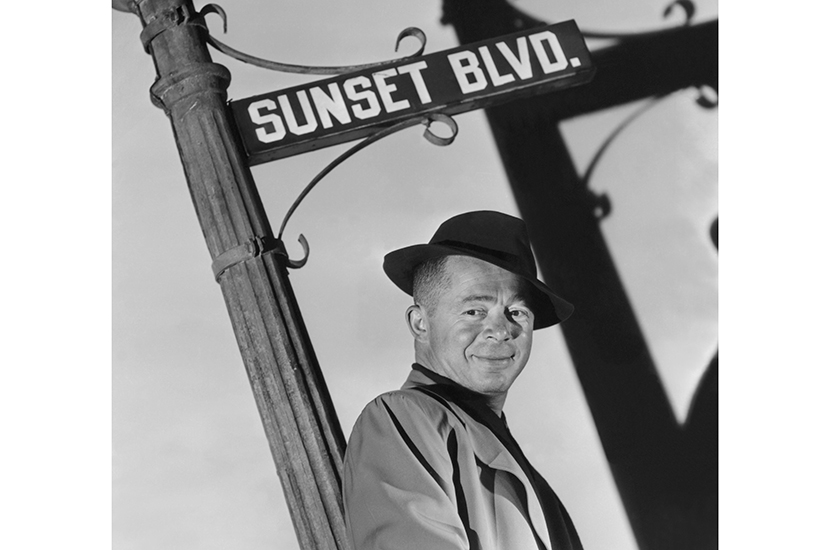Before Billy Wilder became the celebrated director of films such as Sunset Boulevard, Some Like It Hot and The Apartment he was a busy jobbing screenwriter at UFA Studios in Berlin in the early 1930s, writing or co-writing the scenarios to more than 20 movies. And before that, he was a journalist. Starting in Vienna in the mid-1920s, where his earliest assignments included setting the crossword puzzle (a charming example is included in this volume), he quickly moved on to Berlin and became a prolific writer of occasional pieces for papers such as Der Querschnitt and the Berliner Börsen Courier. Selections of these articles have been published before but are long out of print, and were never translated into English. Now, thankfully, Professor Isenberg of the University of Texas has put this frustrating situation to rights with a lively anthology, translated by Shelley Frisch into a brisk, punchy English which feels as though it must be an accurate reflection of the young Wilder’s original tone.
Briskness in fact might be said to be the keynote of Wilder’s journalism. There is nothing deep or reflective about most of these pieces, which give the (by no means disagreeable) impression of having been dashed off over a coffee in the Romanisches Café, and which were doubtless meant to be consumed in the same way. An inveterate self-mythologiser, Wilder once boasted of having interviewed Freud, Schnitzler and Richard Strauss all in the same morning during his Berlin days. But there is little evidence that this actually happened, and most of the little pen-portraits here are not of celebrities but ordinary citizens who happened to have caught the curious reporter’s eye, owing to some quirk in their personality, appearance or métier: thus we get an interview with a modern-day witch, the sketch of a human chameleon called Erwin who keeps getting mistaken for other people and the portrait of a ‘typical English gentleman’, written in lieu of the interview with the Prince of Wales Wilder has been unable to obtain.
This material has been artfully arranged in thematic rather than chronological order, starting with the pièce de resistance and the most famous of Wilder’s forays into journalism: his four-part account of what it was like to work as a dancer for hire in some of Berlin’s most prestigious hotels. ‘On the dance floor 50 couples crowd together, stepping on one another’s feet, panting and sparring. One single mass of flesh, quivering in rhythm like aspic.’
It’s a vivid and memorable piece which provides, too, a direct link to his American films, many of which feature dancing as an image of emotional emptiness or longing. One thinks of Jack Lemmon and Hope Holiday, leaning drunkenly into each other in a deserted bar on Christmas night in The Apartment; Juliet Mills dancing alone at dawn as she waits for Lemmon to return in Avanti!; Colin Blakeley as Dr Watson surrounded by eager ballerinas (first female, then male) in The Private Life of Sherlock Holmes. But, above all, we recall William Holden dancing alone with Gloria Swanson on New Year’s Eve in Sunset Boulevard: her face a portrait of neediness, his a mask of disgust (and self-disgust), an ambience anticipated in the young Wilder’s self-description as he dances
honestly and conscientiously. No wishes, no desires, no thoughts, no opinions, no heart, no brain. All that matters here are my legs, which belong to this treadmill.
The much-vaunted cynicism of Wilder’s films is based in part on his transactional view of human relationships: so many of his hard-bitten heroes and heroines will only enter into a relationship if they have a clear-eyed view of what advantage they will take from it, and you can see the roots of this chilly philosophy in the young journalist’s account of his dancing experience. At the same time, we can also see how much more powerfully Wilder explored such themes in his movies, and how little room journalism gave for his real talents to shine. David Thomson once complained of Wilder’s films:
He outlines characters on paper — in dialogue, setting and situation — rather than in revealed behaviour. Very often the actual images are incidental to the ‘facts’ of narration and dialogue.
Even Mark Cousins, in his admiring essay on The Apartment, said that it fell short of being a masterpiece because it is
too much screenplay, too much soundtrack, not enough image track… When you watch it on a cinema screen it is disappointing. The feelings don’t match the image.
For me, however, these brittle journalistic vignettes prove the opposite: words were not enough for Wilder. The limitations of his journalism merely highlight his later indisputable greatness as a filmmaker.






Comments